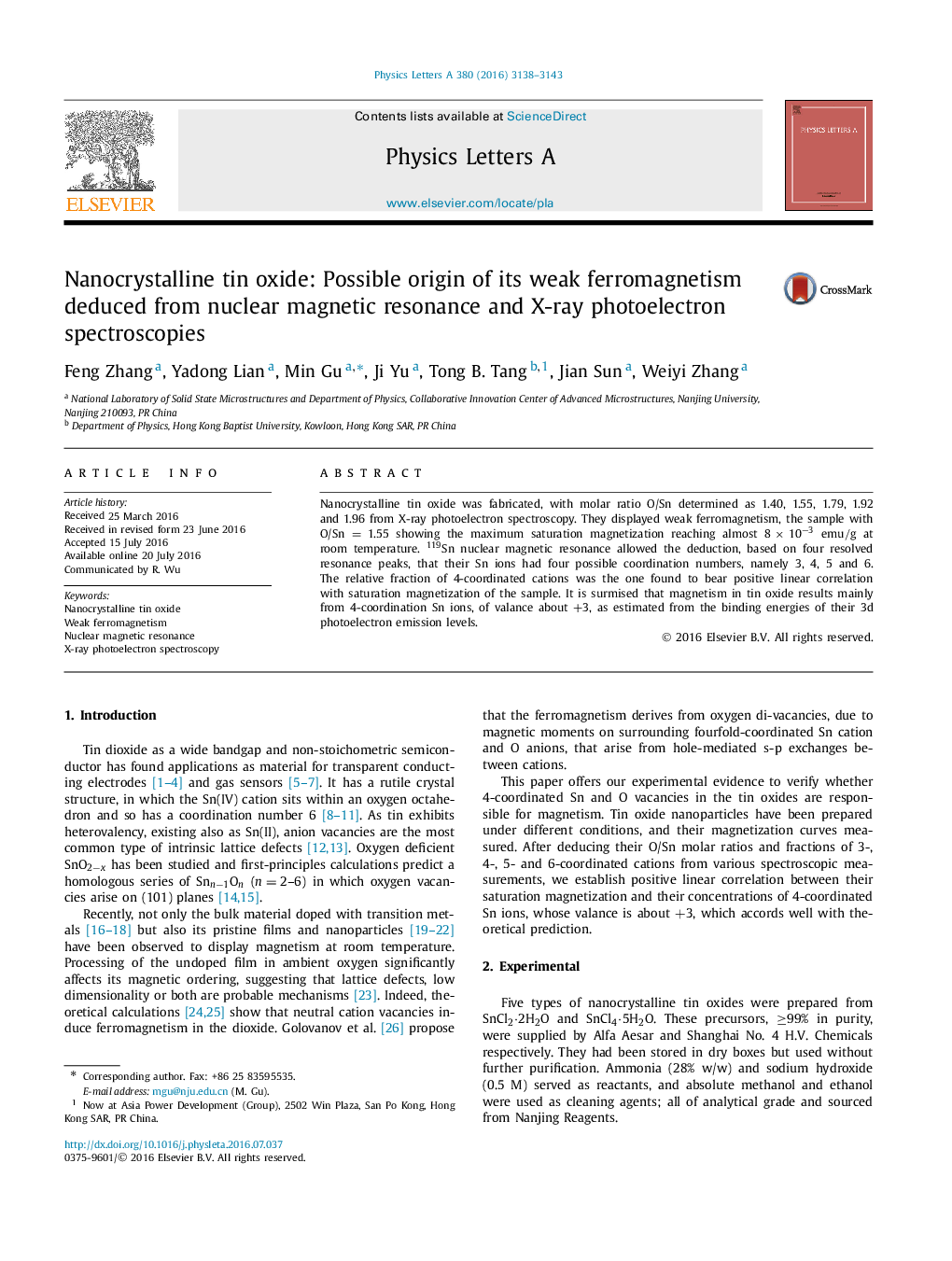| Article ID | Journal | Published Year | Pages | File Type |
|---|---|---|---|---|
| 1866679 | Physics Letters A | 2016 | 6 Pages |
•Nanocrystalline tin dioxide was fabricated, with molar ratio O/Sn determined as 1.40, 1.55, 1.79, 1.92 and 1.96.•119Sn NMR spectrum of Sn3O4 was reported.•119Sn NMR spectra for our samples allowed the deduction that Sn ions had four possible coordination numbers from 3 to 6.•The relative fraction of 4 coordinated cations bore positive linear correlation with saturation magnetization of the sample.
Nanocrystalline tin oxide was fabricated, with molar ratio O/Sn determined as 1.40, 1.55, 1.79, 1.92 and 1.96 from X-ray photoelectron spectroscopy. They displayed weak ferromagnetism, the sample with O/Sn = 1.55 showing the maximum saturation magnetization reaching almost 8×10−3 emu/g8×10−3 emu/g at room temperature. 119Sn nuclear magnetic resonance allowed the deduction, based on four resolved resonance peaks, that their Sn ions had four possible coordination numbers, namely 3, 4, 5 and 6. The relative fraction of 4-coordinated cations was the one found to bear positive linear correlation with saturation magnetization of the sample. It is surmised that magnetism in tin oxide results mainly from 4-coordination Sn ions, of valance about +3, as estimated from the binding energies of their 3d photoelectron emission levels.
